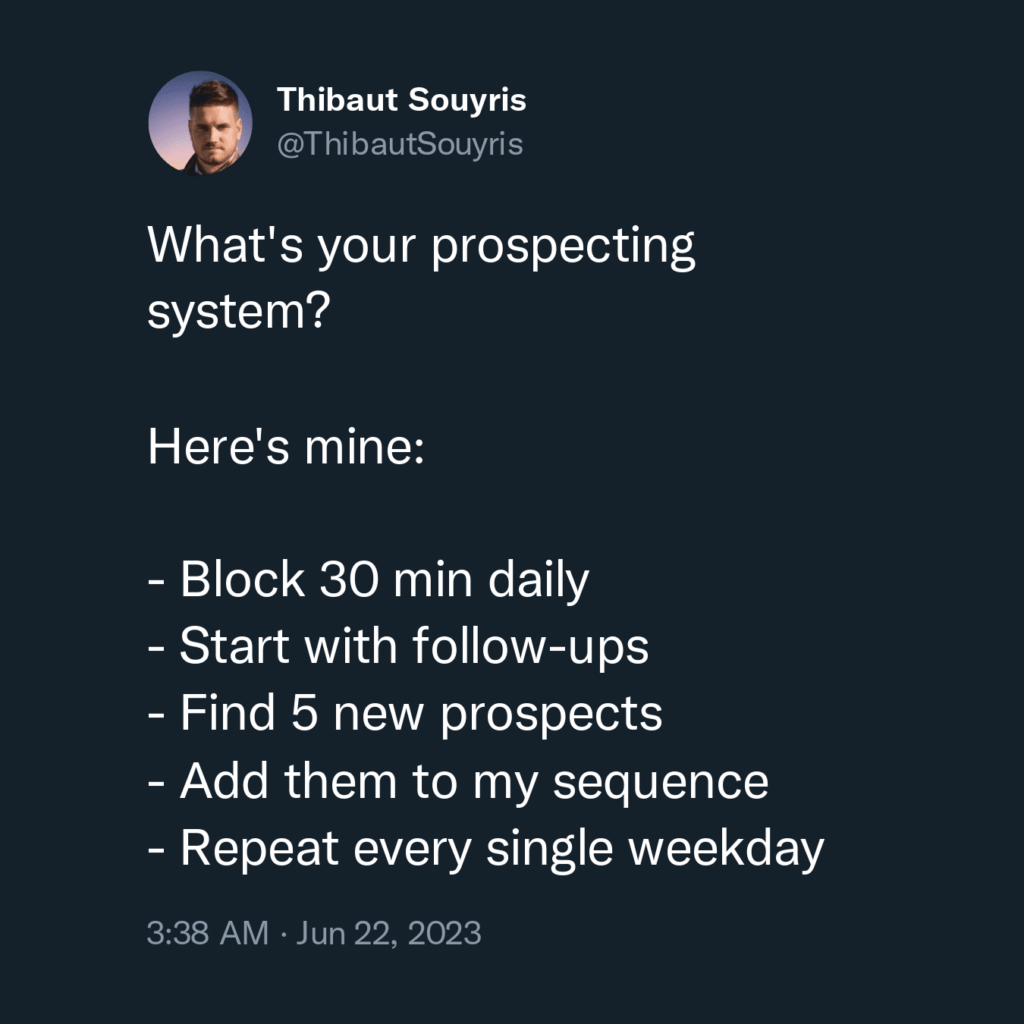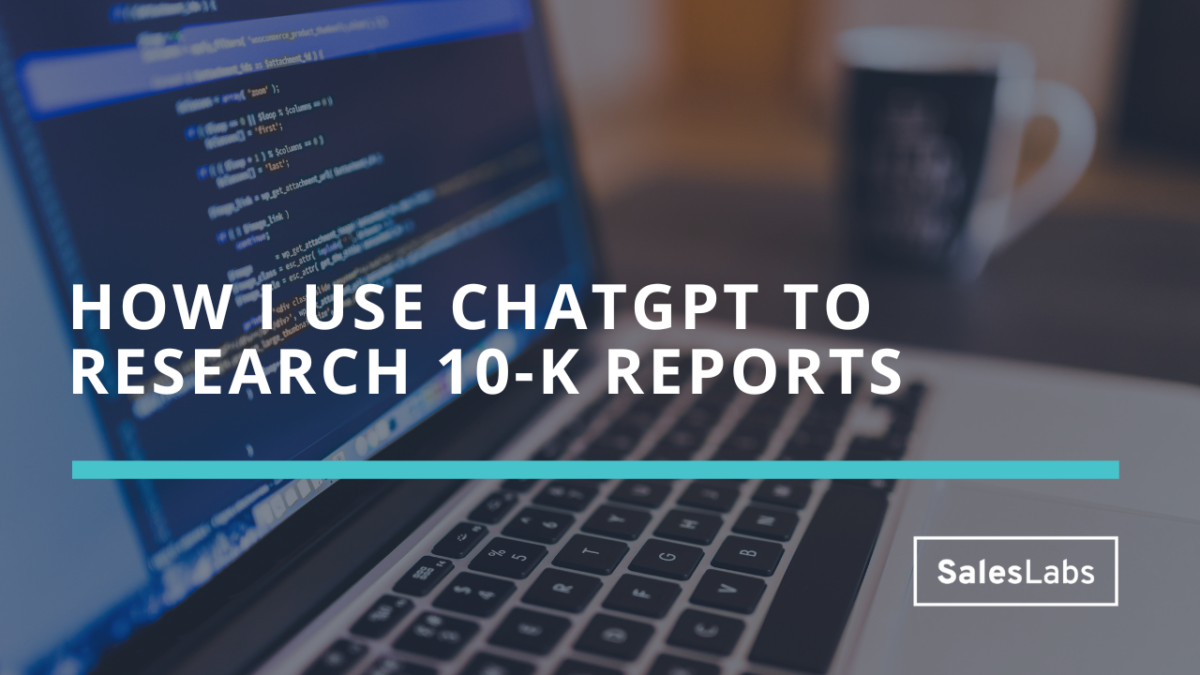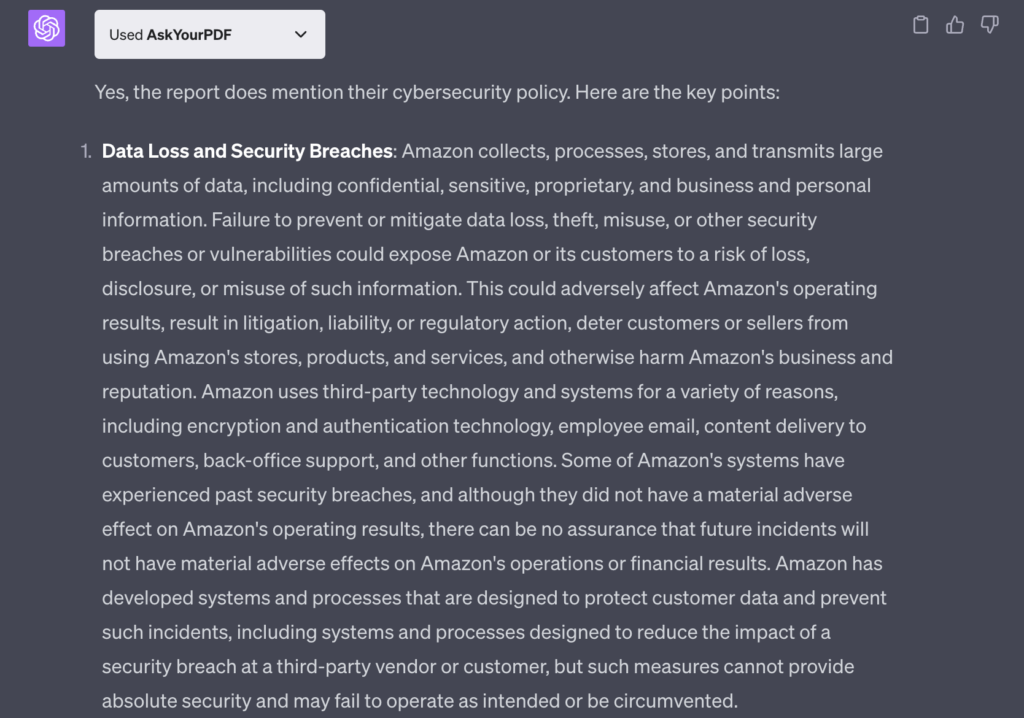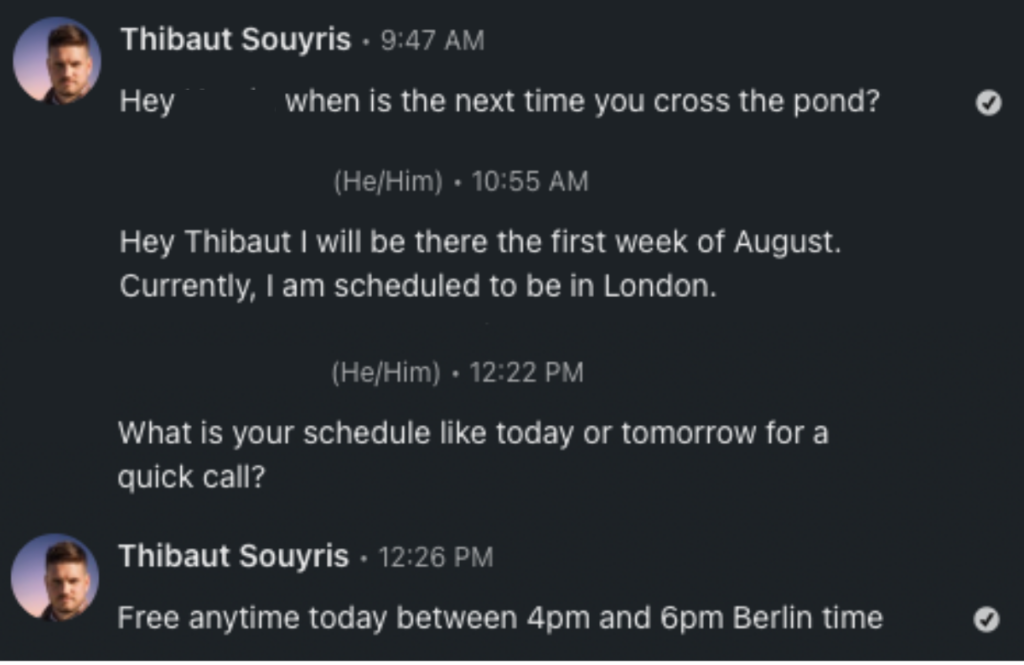Thanks to our sponsor who keep this newsletter free for the reader:
Today’s newsletter is sponsored by my AI Prospecting Masterclass. It’s a 90-min live workshop to discover advanced AI tactics to book meetings. Join the waitlist today.
Here’s what I do in my daily prospecting block
In today’s newsletter, I’ll share the exact process I follow during my daily prospecting block.
And if you want to build a similar prospecting routine, go check my Prospecting Tracker and The New Outreach System.
Hope this helps.
Cheers,
Thibaut Souyris
need help understanding how to use AI for prospecting?
Stop playing around with ChatGPT. Start using it to book more meetings.
P.S. When you’re ready, here are 5 ways I can help you.
→ Write cold messages that get a 38% reply rate and 27% meeting rate here (55+)
Subscribe to the Newsletter
Get my free, 4 min weekly newsletter. Used by 5.400+ salespeople to book more meetings and work when, where, and how they want.
Subscribe to the Newsletter
Get my free, 4 min weekly newsletter. Used by 5.400+ salespeople to book more meetings and work when, where, and how they want.



























